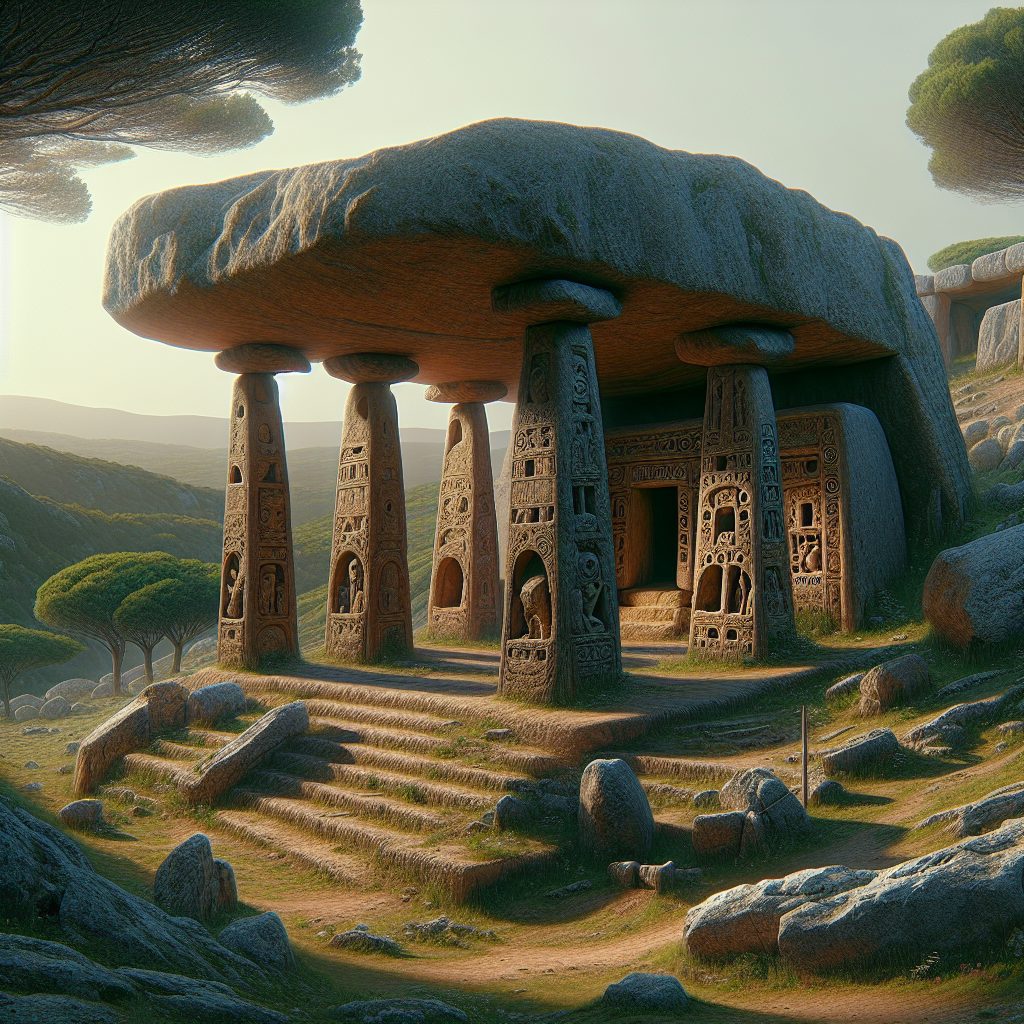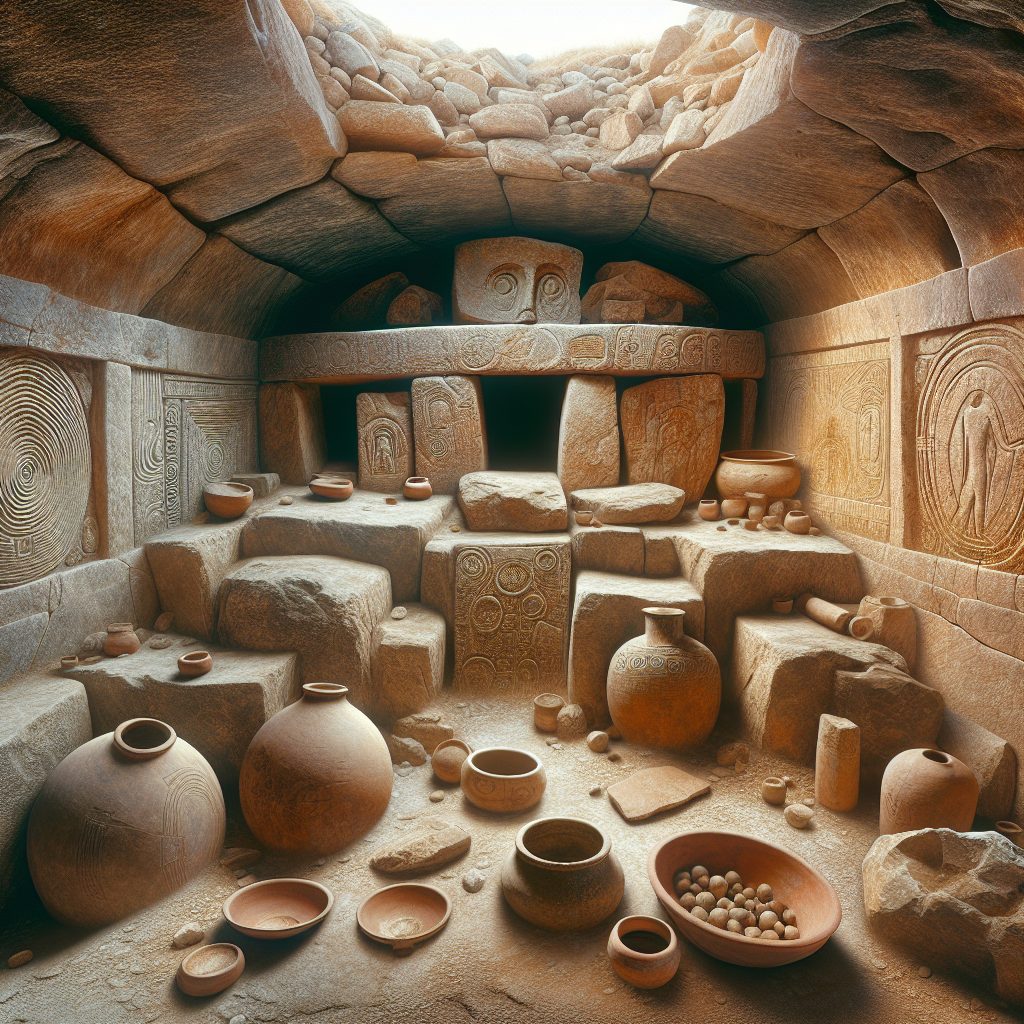Sardinian megalithic tombs are ancient burial sites found on the Italian island of Sardinia. These tombs are characterized by their massive stone constructions, often consisting of large standing stones supporting a horizontal stone slab as a roof. Dating back to the Bronze Age and Early Iron Age, these tombs offer a fascinating glimpse into the rich cultural heritage of Sardinia.
One unique feature of Sardinian megalithic tombs is their impressive size and architectural complexity. The use of large stones to create stable structures is a testament to the advanced construction skills of the ancient inhabitants of Sardinia. These tombs were not merely places of burial, but also served as symbols of power and prestige, representing the importance of social hierarchy within Sardinian society.
In the upcoming section, we will delve deeper into the key aspects and significance of Sardinian megalithic tombs. We will explore their historical context, the rituals and beliefs associated with them, as well as their impact on our understanding of ancient Sardinian culture. By examining the intricate details and archaeological findings related to these remarkable structures, we can gain valuable insights into the beliefs and practices of the people who built them. So, let us embark on a fascinating journey through time and unravel the mysteries surrounding Sardinian megalithic tombs.
Key Takeaways
1. Sardinian megalithic tombs, also known as “domus de janas,” are ancient burial chambers found on the Mediterranean island of Sardinia. They were constructed between 4000 and 1800 BC, making them one of the oldest funerary monuments in Europe.
2. These megalithic tombs were built by the Ozieri culture, an ancient civilization that inhabited Sardinia during the Neolithic period. They believed in an afterlife and created these intricate structures as sacred places for burial rituals and ancestor worship.
3. The domus de janas are often carved into limestone cliffs or sculpted from large rocks, featuring multiple chambers with carved stone facades. Some tombs have simple geometric designs, while others exhibit intricate decorations depicting animals, human figures, and symbolic motifs.
4. The purpose and function of these tombs remain a subject of debate among archaeologists. While they were undoubtedly used for burial, their specific roles in religious or social practices are still not fully understood. Some experts suggest that they were communal burial sites, while others propose they were family tombs or even sanctuaries.
5. Today, many of these megalithic tombs can still be visited on the island, particularly in the central-western region. They offer a fascinating glimpse into Sardinia’s early history and provide valuable insights into the beliefs and practices of its ancient inhabitants. The preservation and promotion of these unique monuments are crucial for understanding the island’s rich archaeological heritage.
What are the Significance and Construction of Sardinian Megalithic Tombs?
1. Introduction to Sardinian Megalithic Tombs
Sardinian Megalithic Tombs, also known as ‘Tumbas de los Gigantes’ or ‘Tombs of the Giants,’ are ancient structures found on the island of Sardinia in Italy. These tombs, built during the Bronze Age, hold great historical and cultural significance for the region.
2. Historical Context and Purpose
These megalithic tombs were constructed between 2800 and 1800 BC and were primarily used as burial chambers for high-ranking individuals or distinguished families of Sardinian society. They served as monumental structures to honor the deceased and perpetuate their memory.
3. Architectural Features and Types
Sardinian megalithic tombs come in various forms, but the two main types are the ‘giant’s grave’ and the ‘gallery tomb.’ The giant’s grave is characterized by a central stele (vertical monumental stone) surrounded by a circular or horseshoe-shaped arrangement of standing stones. On the other hand, gallery tombs consist of a long corridor leading to the main burial chamber.
4. Rituals and Beliefs Associated with Megalithic Tombs
These tombs indicate a deep reverence for ancestors and reflect the religious beliefs and rituals of the ancient Sardinians. It is believed that the dead were accompanied by grave goods, including pottery, tools, and personal belongings, to aid them in the afterlife. The rituals surrounding death and burial demonstrate the spiritual connection between the living and the deceased.
5. Preservation and Conservation Efforts
Due to their archaeological and historical importance, Sardinian megalithic tombs are protected by local authorities and international recognition. Conservation efforts aim to preserve and restore these ancient structures, ensuring that future generations can appreciate their cultural heritage.
6. How to Visit and Explore Sardinian Megalithic Tombs?
1. Research and identify megalithic tomb sites in Sardinia that are open to the public.
2. Plan your visit according to the opening hours and accessibility of the chosen sites.
3. Hire a knowledgeable local guide or join organized tours to learn more about the significance and history of the tombs.
4. Follow any rules or guidelines set by the authorities at the tomb sites, such as not touching or moving any artifacts.
5. Capture photographs and videos, but remember to be respectful of the sacredness of the site.
6. Engage with the local community to gain deeper insights into the cultural significance of these tombs.
7. Support local initiatives and organizations dedicated to the preservation and promotion of Sardinian megalithic tombs.
8. Spread awareness about the importance of these ancient structures and encourage others to visit and appreciate their historical value.
Frequently Asked Questions
1. What are Sardinian megalithic tombs?
Sardinian megalithic tombs are ancient stone structures found on the island of Sardinia, Italy. These tombs were built by the prehistoric Nuragic civilization and serve as burial sites.
2. How old are these tombs?
The construction of Sardinian megalithic tombs dates back to the Bronze Age, between 1800 and 800 BCE.
3. What is the purpose of these tombs?
The main purpose of Sardinian megalithic tombs was to act as communal burial sites for the Nuragic people. They were used to bury multiple individuals, often within a family or clan.
4. How were these tombs constructed?
Sardinian megalithic tombs were built using large stones, forming a chamber covered with a stone roof called a tholos. The stones were carefully arranged without the use of mortar.
5. How were these tombs discovered?
Sardinian megalithic tombs were discovered by archaeologists during excavation projects on the island. Some tombs were already known within local communities but gained wider recognition through these studies.
6. Are Sardinian megalithic tombs open to the public?
Yes, many Sardinian megalithic tombs have been preserved as cultural heritage sites and are open to the public. Visitors can explore these fascinating archaeological sites and learn about their history.
7. What artifacts have been found inside these tombs?
Archaeologists have found various artifacts inside Sardinian megalithic tombs, including pottery, tools, weapons, and personal ornaments. These objects provide valuable insights into the everyday life and culture of the Nuragic people.
8. Are there any rituals associated with these tombs?
While specific details of Nuragic burial rituals are not fully known, it is believed that certain rituals and ceremonies were performed at the time of burial. These practices likely varied among different communities and social groups.
9. Are there any other megalithic tombs similar to those in Sardinia?
Yes, megalithic tombs are found in various parts of the world, including other regions of Europe, Asia, and Africa. These tombs often share similarities in construction techniques and purpose but also exhibit unique regional characteristics.
10. What can we learn from Sardinian megalithic tombs?
Sardinian megalithic tombs provide valuable information about the ancient Nuragic civilization, their social structures, and burial practices. Studying these tombs helps archaeologists and historians piece together the story of this fascinating prehistoric society.
Final Thoughts
Exploring the Sardinian megalithic tombs offers a remarkable opportunity to delve into the mysteries of an ancient civilization. These structures are not merely stone monuments but evidence of a vibrant culture that thrived thousands of years ago. By understanding the Nuragic people and their burial traditions, we gain a deeper appreciation for the rich history and heritage of Sardinia.
The preservation and study of Sardinian megalithic tombs are crucial for uncovering the past and shedding light on human development. These tombs have stood the test of time and continue to captivate us with their architectural prowess. As we delve further into the secrets locked within their ancient walls, we unravel the mysteries of our ancestors and draw inspiration from the remarkable achievements of the past.






